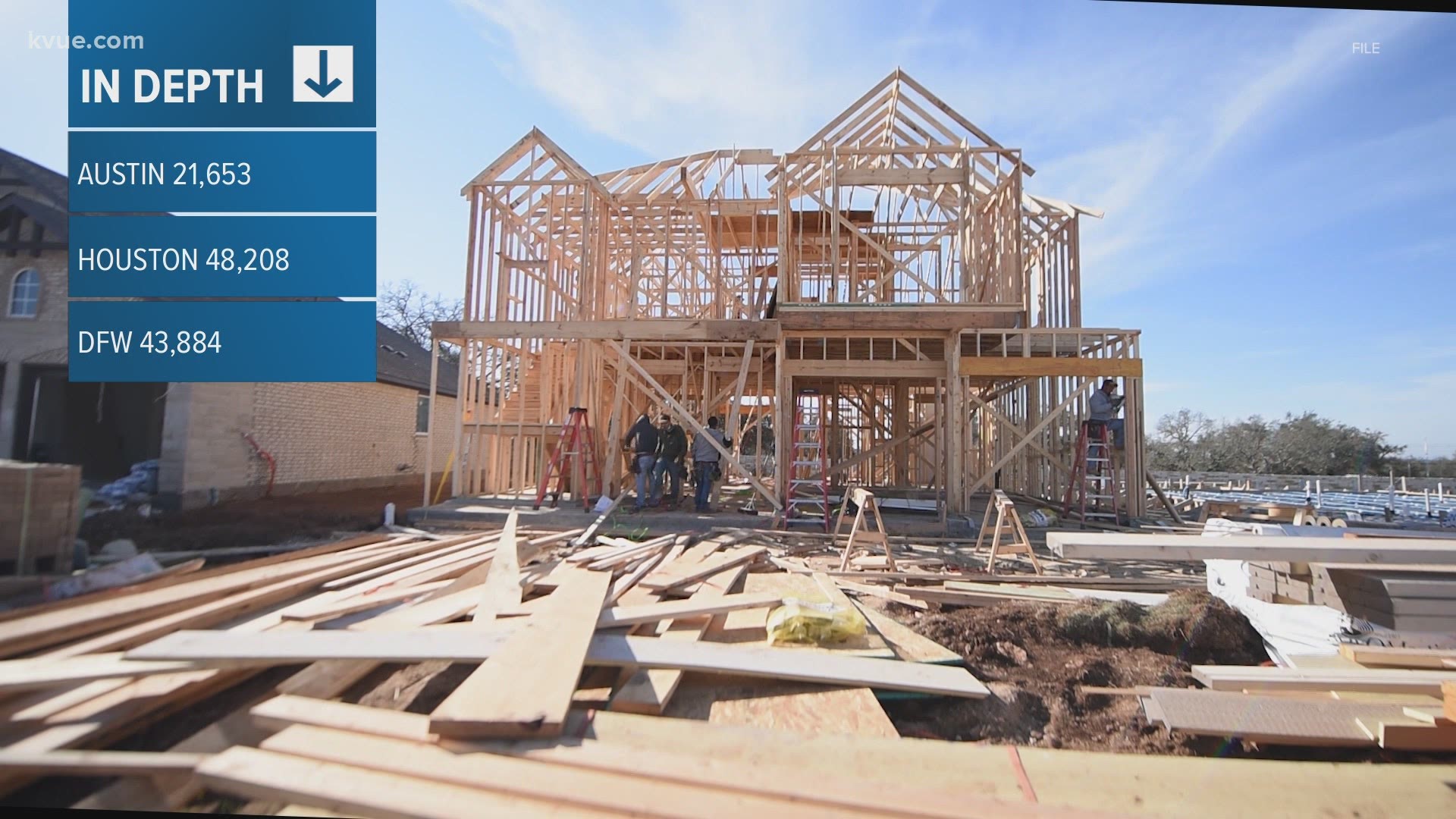AUSTIN, Texas — (CULTUREMAP AUSTIN) New single-family homes are popping up like mushrooms around Austin, with the region nailing down its status as one of the busiest home construction markets in the country.
Data from the National Association of Home Builders shows Austin issued 21,653 permits for single-family homes in 2020. That puts the Capital City at No. 5 among U.S. metro areas for single-family construction permits handed out last year.
And it's been busy around the Lone Star State with Houston issuing 48,208 permits for construction of single-family homes, giving it the No. 1 spot in the nation. DFW, meanwhile, issued 43,884 construction permits, making it the No. 2 busiest market.
Despite last year’s flood of single-family construction permits, homebuilders in Texas are having trouble keeping up with “the phenomenal demand,” says Ben Caballero, founder and CEO of Dallas-based HomesUSA.com.
The Texas Real Estate Research Center says that across the state, the number of single-family homes that began construction in 2020 grew 18.9 percent compared with 2019.
Although last year’s new-home construction pace was slower last year in Austin than in DFW and Houston, the Austin area led the state’s major metros on a per-capita basis with more than 21,300 single-family homes getting underway.
Low mortgage rates and robust population growth boosted housing demand across the state last year, the center says. And this year, demographic trends like the aging millennial population and out-of-state migration will continue to propel housing demand, the center says.
Statewide, the number of single-family home permits is expected to rise about 15 percent this year versus 2020, Luis Torres, research economist at the Texas Real Estate Research Center, says in a release.
“Homebuilders are trying to satisfy demand in the lower price [categories] by building homes in the suburbs or outer city borders where land costs are lower,” Torres says. “This trend was prevalent before the pandemic but has become even more widely adopted over the past year.”
Torres predicts an 8.4 percent jump this year in single-family home sales around the state.
In January, Austin ranked second among 20 major U.S. markets tracked by housing data provider Zonda for the year-over-year increase in pending sales of new homes (42.3 percent). Only Jacksonville, Florida, ranked higher (45.8 percent). Dallas landed at No. 6 (34.9 percent) and Houston at No. 11 (21.4 percent).
“The housing market is incredibly hot today in virtually every metro across the country. Builders are eagerly out shopping for land to better match supply with demand,” says Ali Wolf, Zonda’s chief economist.
Zonda data shows that in January, Dallas was the state’s most undersupplied market in terms of lots available for new homes, with Austin and Houston not that far behind. Dallas, Austin, and Houston all fell into the “significantly undersupplied” category for vacant home lots.
That lack of supply hasn’t stopped homebuilders from marching ahead with construction. For instance:
- The first phase of the 454-acre, mixed-use Parmer Ranch project is getting underway in the Austin suburb of Georgetown. That phase will feature 155 single-family homes. The project eventually will contain 1,000 single-family homes.
- The 95-acre Chalk Hill master-planned community in the DFW suburb of Celina will offer 440 single-family homes.
- The 564-acre, master-planned Beacon Hill community ultimately will bring roughly 1,000 single-family homes to the Houston suburb of Waller.
PEOPLE ARE ALSO READING:

